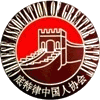As Chinese Americans encountered discrimination and violence, they formed strong organizations. Clan associations and tongs provided a public voice and social support services.
Today, the Chinese community continues to expand and evolve as a dynamic culture in North America. The younger educated generation who are being integrated rapidly into American society find the need for Chinatown less compelling.
1. Language
Chinese community languages play a vital role in maintaining cultural identity and heritage for people of Chinese descent around the world. They allow communication among members of these communities and facilitate the passing down of traditions, festivals, and folklore from one generation to another.
In most countries with large Chinese populations, local dialects are spoken in addition to Standard Mandarin and Cantonese. These dialects form part of a larger family of Chinese languages, each of which has its own distinct tones and pronunciation.
In Chinatowns, these dialects are often used for daily communication. Many of the local video rental stores and supermarkets in these areas offer Cantonese, Mandarin and other language films made in Hong Kong, Taiwan and mainland China. This provides an opportunity for people from various dialect groups to share common cinematic experiences and to learn more about each other’s culture.
2. Culture
Historically, Chinese communities were organized into secret associations known as tongs. These associations provided mutual aid and protection, but they also ran illegal enterprises (e.g., gambling, prostitution and smuggling). Tong leaders were often imbued with semi-governmental powers.
In general, Chinese-speaking communities are very family oriented and rely heavily on each other. Many families live with three generations under one roof, and grandparents have a big influence on the younger generation’s life choices.
The Chinese Culture Connection (CCC) empowers Chinese immigrants and their descendants to retain their heritage, develop bicultural fluency, and enrich others through cultural exchange programs. This non-profit organization is located in Malden, MA. It offers educational programs, cross-cultural dialogues and special events to promote Chinese language and culture in Greater Boston.
3. Education
The Chinese Community Center offers a variety of educational programs and activities for the local community. This includes language and cultural classes, folk dance groups, playhouses and choruses. The organization is also involved in charitable work and community service.
The majority of members live in Melbourne’s eastern and southern suburbs. Most of these people were born in China, while others migrated to Australia from other countries.
Education in China has dramatically expanded since Deng Xiaoping’s economic reforms. However, a gap between rural and urban students remains, with 60 million “left-behind” children cared for by their parents in towns and villages that have little or no public schools. These children are excluded from city schools unless they pay high school fees or meet other requirements, such as urban registration (Hukou). Private entrepreneurs operate semi-official schools for these students.
4. Employment
The Chinese community in Victoria is mainly located in Melbourne’s south-eastern and eastern suburbs. Many members of the Chinese community work as lawyers, accountants, teachers and health professionals. Others work in retail and hospitality. There are also a number of family businesses such as Chinese restaurants and herbal shops.
In New York City, the Chinese community is concentrated in Chinatown and the surrounding areas of Brooklyn, Queens and Staten Island. In suburban New Jersey, there are significant Chinese communities in Bergen County; Middlesex County; Mercer County; Morris County; and Parsippany-Troy Hills and West Windsor.
3: Loo deals with the structural adaptations of Chinese American community organizations to social change. It covers a range of topics including family structure, methods for earning a living, ethnic identity and a biographical sampling of representatives of different classes within Chinatown.
5. Religion
While the Chinese Communist Party is officially atheist and discourages religion, many people practice a range of beliefs and rituals. Authorities tightly monitor registered and unregistered religious groups. For example, if one deity doesn’t respond to a person’s petitions, the person may try another deity or temple. This explains why it’s difficult to measure how religious the Chinese community is.
Western definitions of religion that emphasize adherence to congregational worship services are less well-suited to East Asian beliefs and practices. For example, a person may be a Buddhist but also believe in spirits or practice fengshui. Survey data suggest that combinations are common. In late-imperial China, adherence to a particular tradition did not require a rejection of other ideas and traditions. Instead, a belief system was seen as part of an integrated cosmos.
